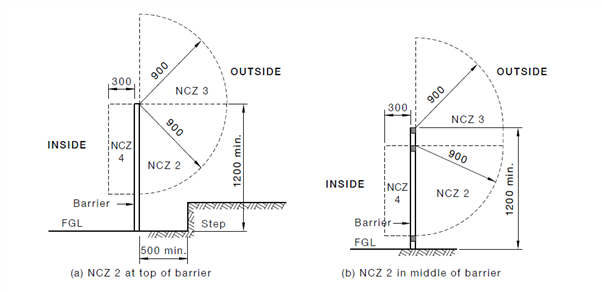Backyard swimming pools
Installing a Pool or Spa
Are you are thinking of installing or constructing a swimming pool or spa?
A swimming pool is defined as an excavation, structure or vessel that is capable of holding water greater than 30cm and that is designed, manufactured or adapted to be solely used, for the purpose of swimming, wading, paddling or any other human aquatic activity.
Every permanent, portable and temporary swimming pool or spa that holds over 2000 litres will require an approval from Council.
You may like to contact our Duty Building Officer on 02 4993 4201 for clarification on approvals.

Supervision - there's no substitute!
It is important to remember that whilst a barrier may assist in reducing drownings in backyard pools, the most effective way to prevent drownings is for children to be adequately supervised by a parent or other responsible adult.
Council promotes swimming pool safety as part of its annual swimming pool education and awareness campaign.
Campaigns have also included state-wide initiatives such as Kids Can Drown Without a Sound and Protect Your Pool, Protect Your Kids. These initiatives provide helpful information to pool owners and parents on how to keep kids safe in and around swimming pools. You can also perform your own safety checks by using the pool safety checklist.
NSW Swimming Pool Register
As a pool owner it is your responsibility to ensure that your swimming pool and/or spa is registered on the NSW Swimming Pool Register. In addition to this, if your swimming pool and/or spa no longer exists on your property it must be removed from the NSW Swimming Pool Register.
Council is able to assist you in registering and/or removing your swimming pool and you can contact our Customer Service Team on 02 4993 4100. Please note that a fee will be charged as per Council’s Fees and Charges. Penalties apply if you do not register.
When is a Pool Barrier required?
All pools must be surrounded by a barrier that separates the pool from the house. This includes inground, above ground, inflatable, portable pools and swim spas that are capable of holding more than 30cm of water.
Older swimming pools might include doors or windows as part of the pool fence or barrier, visit NSW Fair Trading for more information.
Indoor swimming pools have to follow pool compliance regulations, which include specific requirements for doorsets, door hardware heights, window openings and the provision of a CPR chart.
Pool Barrier requirements
Child resistant barriers around swimming pools and spas should be installed and maintained to the most current Australian Standards.
To make your pool safe and in line with legislation you are required to:
- be at least 1.2m high (as measured on the outside from the finished ground level)
- not leave a gap at the bottom bigger than 10cm from the finished ground level
- if a boundary fence is part of the pool fence, the barrier must be 1.8m high (as measured on the inside from finished ground level)
- not have gaps of more than 10cm between any vertical bars in the fence
- if containing horizontal climbable bars, have these spaced at least 90cm apart
- the gate must open outwards, be self-closing and self-latching
- any trees, shrubs or any other objects such as a barbeque, pot plants, toys, ladders and chairs that can be used as a foothold are not allowed within the 90cm non climbable zone.
- the pool fence must be well maintained and in good working order
- an appropriate resuscitation sign (CPR Chart) must be displayed in a prominent location in the immediate vicinity of the swimming pool area
Non-Climbable Zone (Internal Barrier)

Non-Climbable Zone (Boundary Barrier)

Requirements may vary depending on the year the pool or swim spa was constructed and more details can be found on the NSW Fair Trading Website and Swimming Pool Compliance Checklist .If substantial works have been undertaken since the original construction date the entire swimming pool barrier must be upgraded to the current Australian Standard.
CPR charts can be purchased from Council’s Administration Office as per Council Fees and Charges
Certificate of Compliance
A Pool Certificate of Compliance is required when:
Buying or selling a property
Your conveyancer should ensure one of the following is attached to the contract for the sale of land:
- a valid Certificate of Compliance
- a Certificate of Non Compliance
- a relevant Occupation Certificate
Renting your property
If you own a rental property with a pool, it's your responsibility to obtain a valid Certificate of Compliance before the residential tenancy agreement is entered into.
Operating tourist accommodation
While not mandatory, tourist accommodation and multi-unit premises with a swimming pool should obtain and renew their Certificate of Compliance every three (3) years.
Only Council Officers and accredited pool certifiers are authorised to inspect and check if pools meet all the compliance standards.
A swimming pool must be registered on NSW Swimming Pool Register before a Certificate of Compliance can be issued.
Certificates of Compliance / Occupation Certificates are valid for three years from the date of issue.
If a Non-Compliance Certificate is issued, the owner has 90 days to undertake and fix all defective works. Council may take regulatory action by way of a Notice, Direction or Penalty Infringement Notice for failure to have the matters rectified within the 90 day period.
You can apply for a Swimming Pool Compliance Certificate here
Spa Pool vs Swim Spa
Spa Pool means any excavation, structure or vessel in the nature of a spa pool, floatation tank, tub or the like. A typical spa pool contains only seating and water jets and requires a lockable lid.
Swim Spa means any excavation, structure or vessel that combines the features of a swimming pool and a spa. Swim spas may include jets designed to swim against, an attachment to aid in swimming or an area that does not contain seating, that may be used for water play. Swim spas may be used in the same manner as a pool and therefore are to be surrounded by a compliant barrier.